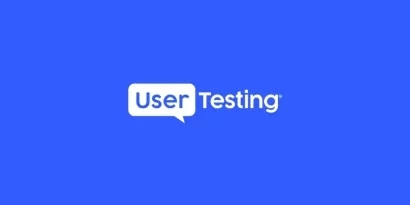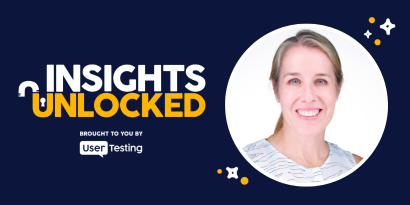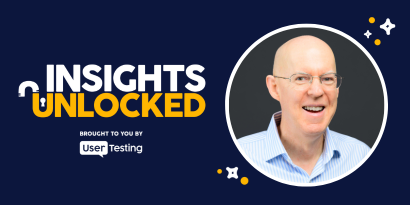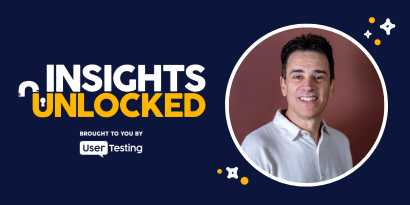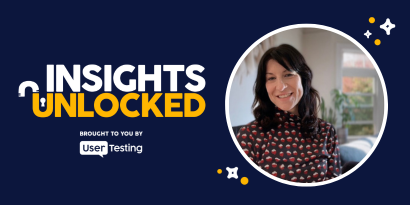
Episode 185 | August 25, 2025
Optimize with empathy: Gwen Hammes on turning behavior into brand impact
Discover how Gwen Hammes uses experimentation and behavioral insights to drive conversion optimization and better customer experiences.
Optimize with empathy: Gwen Hammes on turning behavior into brand impact
Most brands treat conversion optimization like a checklist item—another tactical lever to pull on the path to purchase. But what if it’s actually one of the most powerful sources of customer insight hiding in plain sight?
In a recent episode of the Insights Unlocked podcast, Gwen Hammes, co-CEO of CRO Metrics, unpacked why the most meaningful customer experiences don’t start in brainstorming rooms or brand campaigns. They begin at the moment of action—when a customer either clicks forward or bounces away.
Drawing on a career that spans global creative agencies and growth experimentation leadership, Gwen shares how behavioral insights from conversion optimization can help build better customer experience strategies, transform organizational culture, and drive long-term business results.
Conversion optimization is behavioral gold
Gwen challenges the perception that conversion rate optimization (CRO) is dry or overly technical. “It's actually very powerful. It's very insightful,” she says. “That’s when you learn—are people really doing and acting on what they might have said they’re interested in?”
In other words, while surveys and focus groups reveal what customers say, CRO reveals what they do. Every experiment—every A/B test, every page redesign—offers a snapshot of real user behavior. And for Gwen and her team, these signals are gold mines of insight.
By running over 30,000 experiments, CRO Metrics has seen consistent patterns emerge. One standout? Symmetrical messaging.
“Is your paid media driving to a landing page that continues the customer experience?” Gwen asks. “And is that experience cohesive across platforms like Snapchat or TikTok? You’d be surprised how many brands are not doing this—and the lift they see when they start is incredible.”
This insight aligns directly with a customer-first approach, where consistency and clarity can significantly impact not just engagement, but trust.
ON-DEMAND WEBINAR
Tactical (and practical) tips to get fast feedback for better marketing
A cultural shift toward creativity and grit
Before CRO Metrics, Gwen’s path took her across borders—literally. One of the pivotal moments in her career was living and working in Mexico City, where she learned how different cultures solve problems with creativity and grit rather than rigid process.
“In the U.S., we’re trained to follow a process: Step A, then B, then C. But in Mexico, there’s a level of ingenuity that’s incredibly liberating,” she recalls. “They don’t always have budgets or timelines—but they get it done.”
That shift, she says, helped her become a more empathetic and outcome-driven leader. It also taught her that the best customer journey strategies often come from removing friction, not adding complexity.
The lesson: Effective digital experience design isn’t always about perfect alignment; sometimes it’s about adapting fast, thinking creatively, and focusing relentlessly on the end goal—customer impact.
From customer action to brand strategy
What Gwen advocates for is a kind of insight ripple effect: using what you learn far down the funnel—like a failed checkout or an abandoned form—and letting it influence decisions across the entire customer experience strategy.
Too often, teams treat CRO as a siloed function, disconnected from branding, product, or UX design. But Gwen believes that’s a missed opportunity.
“How do we take insights from the bottom of the funnel and turn them into a big brand idea that travels across the experience?” she asks. “The consumer doesn’t know who worked on what part. They just know how it feels.”
This is where organizational alignment comes into play. Gwen shares an example from a coffee chat with a McDonald’s executive, who described how disjointed their consumer experience could feel due to internal silos. And if a company as vast as McDonald’s struggles with this, imagine how common the issue is elsewhere.
To Gwen, it’s a reminder that brands must stop thinking in terms of departments—and start thinking in terms of journeys.
Personalization starts with alignment
While AI tools are increasingly being used to personalize experiences, Gwen says many of the highest-impact improvements still come from solving the basics.
“One of the biggest levers is simply ensuring that your ad message matches your landing page,” she says. “It sounds so obvious, but most clients we work with aren’t doing it when they start.”
That kind of behavioral insight—rooted in experimentation—is what sets successful growth marketing strategies apart. It also reinforces that optimization doesn’t always require deep tech investments. Sometimes, a small tweak in message alignment can create exponential returns.
GUIDE
Fix the gaps: how to optimize the customer journey for better ROAS and higher ROI
De-risking change through experimentation
In the ever-shifting landscape of digital strategy, organizational change can feel scary. Gwen’s advice? Stop treating change as a light switch. Make it a journey.
“At CRO Metrics, I always tell my team: You’ll never get a surprise announcement from me. We communicate early and often,” she says.
This mindset extends to how the company helps clients manage website redesigns. Rather than going all-in on a massive overhaul, they use what Gwen calls an experiment-led redesign. “It’s about reducing risk and learning as you go,” she explains.
It’s also a powerful way to combat what she calls “shiny object syndrome”—the urge to chase trends without understanding the real problem or customer need.
Building a dynamic talent model for resilience
As many companies wrestle with headcount constraints and economic uncertainty, Gwen has implemented a dynamic talent model that helps her team stay focused on delivering great work—even when the environment shifts.
“We’ve created a contractor ring that flexes up and down,” she says. “It gives our full-time employees stability and predictability, while still allowing us to respond quickly to demand.”
This model reflects a larger trend toward sustainable operations in professional services—and reinforces how the right customer experience strategy must also take care of the teams delivering it.
Leading with empathy and experimentation
One theme that comes through clearly in Gwen’s leadership approach is empathy—not just for customers, but for colleagues and clients as well.
Whether it’s encouraging transparent communication, running internal surveys, or mentoring women through programs like the Women of Growth Marketing and 1871, Gwen believes creating space for people to grow is just as important as growing the business.
And she’s intentional about showing—not just telling—how tools like AI can help.
“Sometimes people feel like they have to hide that they’re using AI because it looks like they’re not doing the work,” she says. “But we make it explicit. For example, we used ChatGPT to summarize survey data. Then we told everyone, so they know it’s okay. It’s encouraged.”
This kind of AI adoption in CX is less about automation for its own sake—and more about creating time for deeper thinking and connection.
Finding insights in the unexpected
Some of Gwen’s best campaigns—from the Skittles Super Bowl spot to a Cottonelle brand repositioning—came from leaning into behavioral trends that others ignored.
With Skittles, the team noticed fans making art out of the candy, prompting a playful campaign rooted in what people were already doing. With Cottonelle, they observed a disconnect: People were spending heavily on self-care—but choosing toilet paper based on price alone.
“We saw people doing things like bleaching and vaginal steaming,” she says. “But when it came to toilet paper, they bought whatever was on sale. That was the insight.”
From there, the team reframed Cottonelle not just as a product, but as a personal care essential—and created a whole new emotional connection to a commodity product.
These are clear examples of how behavioral science and curiosity can spark strategies that transform perception—and purchase behavior.
Conclusion: insights unlock everything
If there's one message Gwen wants marketers, product leaders, and CX strategists to walk away with, it’s this: conversion optimization is not just about numbers—it’s about understanding people.
By combining data, experimentation, and empathy, brands can create more seamless, human-centered experiences that resonate across the entire customer journey.
And the best part? You don’t need to wait for the next rebrand or product launch to start.
“Put yourself in their shoes and meet them halfway,” Gwen says. “You never know what someone’s going through—and practicing that can surprise you in so many great ways.”
Episode links:
- Gwen Hammes on LinkedIn
- The CRO Metrics website
- Nathan Isaacs on LinkedIn
- Unlock higher conversions: understanding what users really want: This on-demand webinar explores how real customer feedback goes beyond data—helping teams identify friction, validate design decisions, and optimize digital experiences.
- Optimizing conversion rates for retail and consumer brands: A practical guide showing how successful brands address fragmented customer journeys and missed personalization opportunities to boost conversions and satisfaction
- How to create customer journey maps to increase conversions: A blog that dives into mapping customer touchpoints to identify pain points, optimize interactions, and align internal teams—perfectly resonating with journey-driven experimentation
PRODUCT TOUR
Inside the Human Insight Engine
See how top teams get fast, actionable insights in this 20 - 30 minute biweekly product tour, where each session highlights a unique real-world use case.
